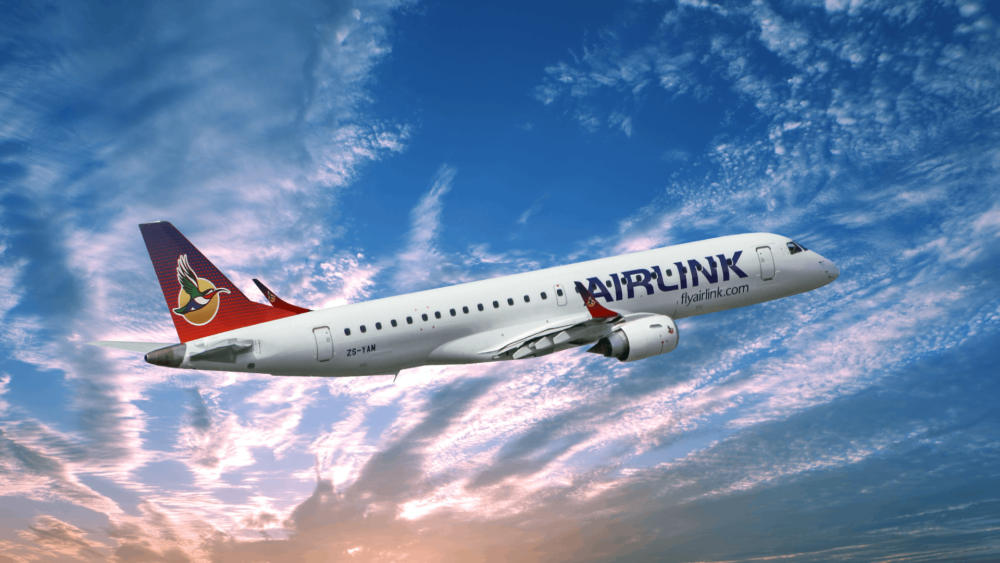For a quarter of a century, South Africa’s Airlink was hanging on to the coattails of its international partner, South African Airways. But even prior to the worst of SAA’s financial crisis, the airline had ambitions to become independent. The COVID slowdown gave Airlink a pause in which to achieve that ambition, emerging with a new look and a new business strategy.

Breaking free from the ‘mothership’
For South African airline Airlink, to say its position as a feeder airline for South African Airways was well established would be an understatement. The airline had operated for 25 years as SAA’s little brother, launching in 1995 with similar branding and as a member of the same frequent flyer program.
By 1997, the airline had deepened its partnership with SAA, joining the main airline and South African Express in a strategic alliance. Airlink became South African Airlink and adopted the brand identity of its larger international partner.
Despite its close relationship, Airlink harbored desires to break free of the ‘mothership.’ As SAA fell deeper and deeper into financial trouble, Airlink saw an opportunity to grasp its independence. Despite the trials of the pandemic, 2020 saw it change its name from SA Airlink to just Airlink, and shake off the branding of its partner airline in favor of a fresh, new identity.

Speaking at Simple Flying’s recent Future Flying Forum, Founder and CEO of the airline Roger Foster noted,
“If anything, COVID presented the opportunity to implement the strategy … when your business is entrenched and totally dependent on the mothership for that amount of time, one can imagine to untangle that spaghetti and to reinstate independence is a mammoth task. COVID and all of the lockdowns presented the opportunity for us to quietly get on with that implementation of independence.”
Breaking free has not been an easy task. Airlink needed to establish its own systems and processes, and to implement those systems in an effective way. It had to create its own partnerships and identity, all whilst managing the massive disruptions that were going on in the South African market. Nevertheless, the process was a success, as Foster explained,
“Right now, I’m very pleased to say Airlink is standing alone, totally independent from that relationship that we previously had with the mothership, as it were.”

Stay informed: Sign up for our daily and weekly aviation news digests.
Different types of partnerships
Although Airlink is standing proudly on its own two feet today, that doesn’t mean it’s not embracing partnership working in other ways. The airline recently announced a codeshare partnership with Middle Eastern giant Emirates. It has also established a codeshare with United. But that’s not the limitation of its partnership strategy.
Alongside these codeshares, Airlink has interline agreements with a whole host of major airlines. These include big internationals like Qatar, Lufthansa, British Airways, Air France, Delta, Virgin and KLM, as well as other African partners such as LAM, TAAG and Ethiopian. This enables Airlink to offer onward connectivity to people traveling to and from hundreds of global destinations, and it’s a strategy that is already paying off.

Foster noted that the restart of international travel had been a boon to the airline, thanks to the many relationships it cultivates, commenting,
“Just a month and a half ago, we had almost zero interlining traffic. But right now, it’s almost 20% of our business. So we’ve definitely seen an uptick. And the multiple relationships that we have, firstly established, and then nurtured, are undoubtedly bearing dividends right now.”
By January 2021, Airlink was Africa’s second-biggest airline. Since then, the regional carrier has gone from strength to strength. With international travel beginning to bounce back, present COVID variant worries aside, 2022 looks set to be a bumper year for Airlink.
from Simple Flying https://ift.tt/3xUckaM
via IFTTT
Comments
Post a Comment